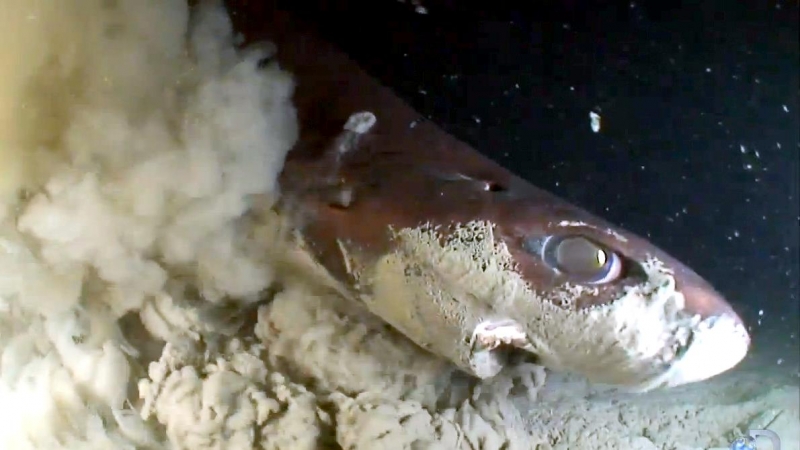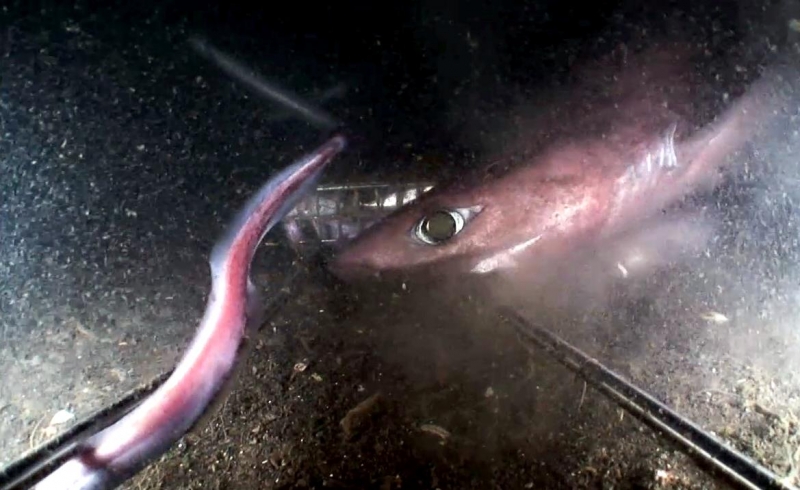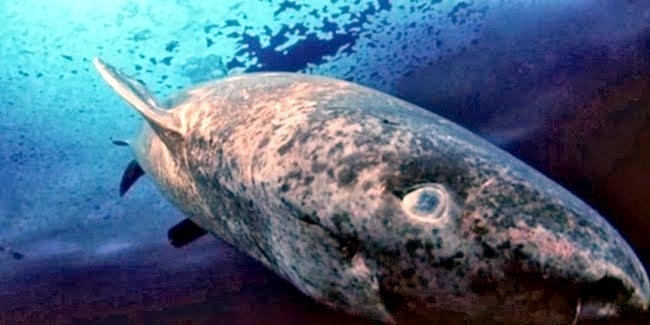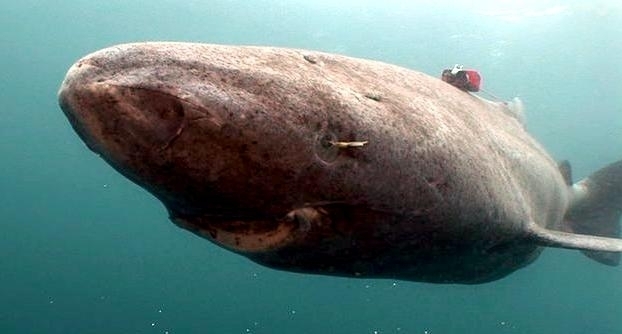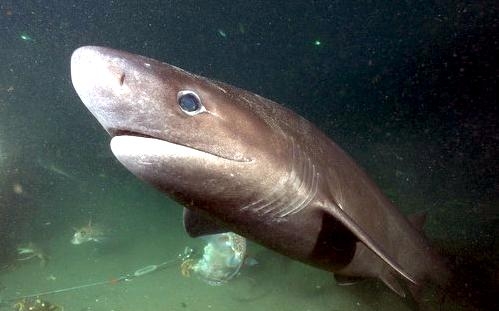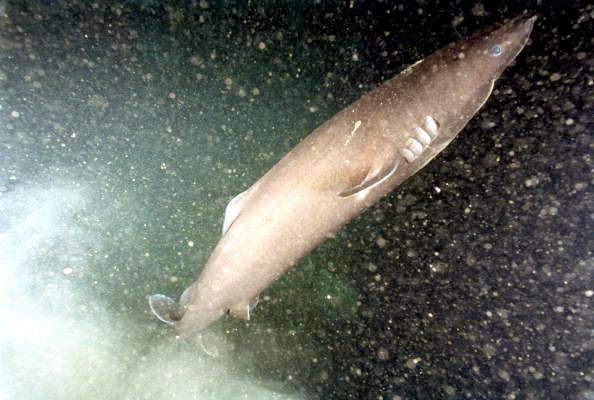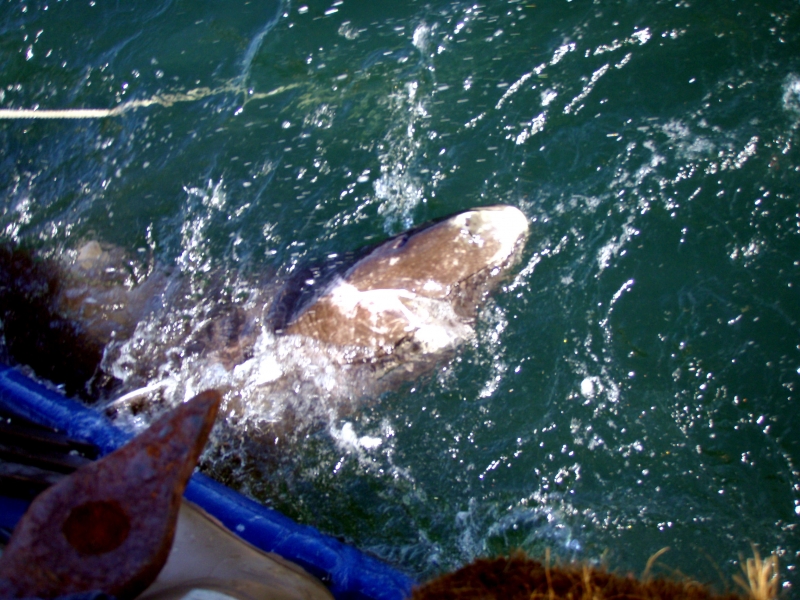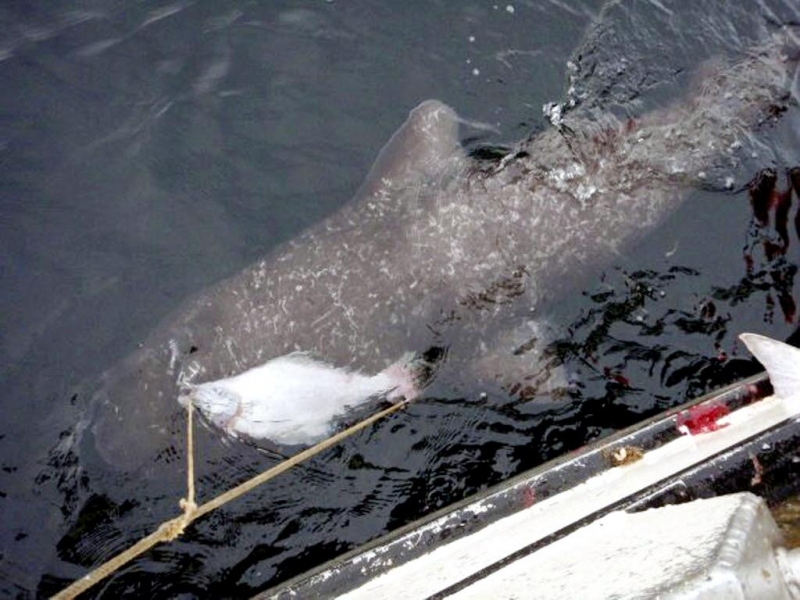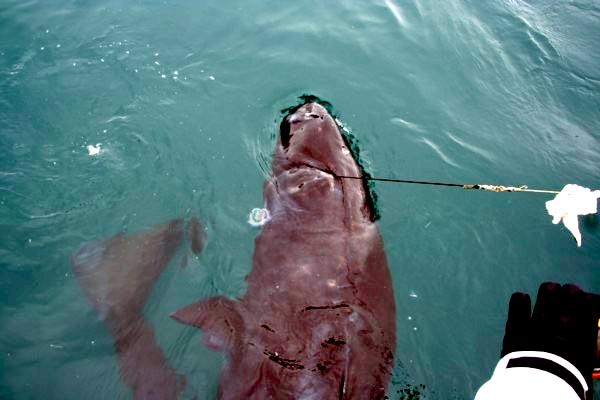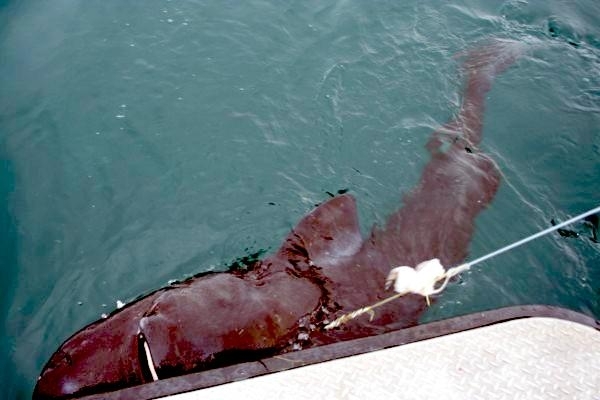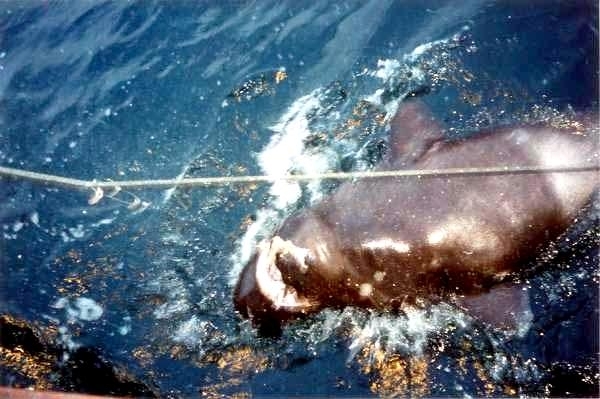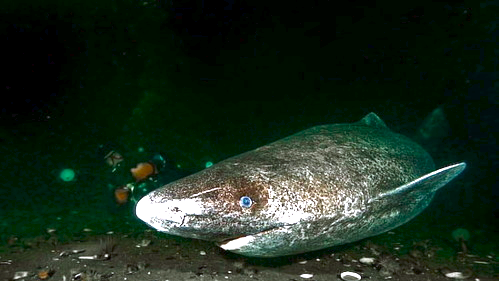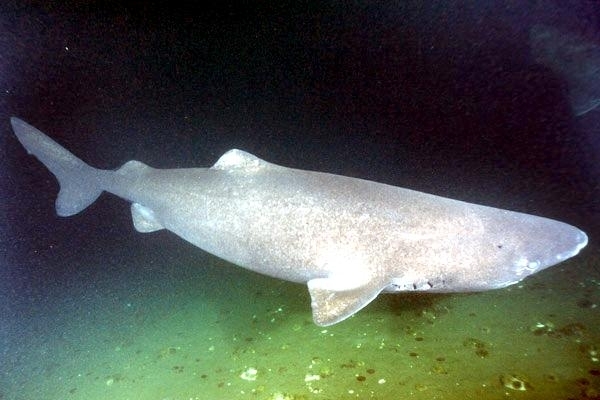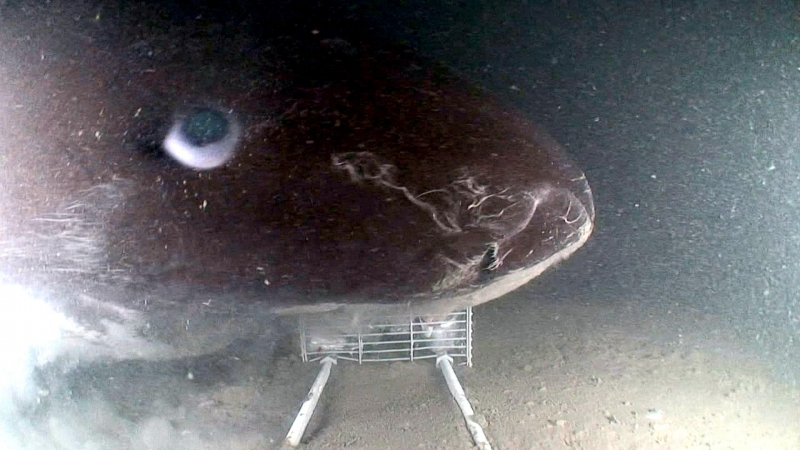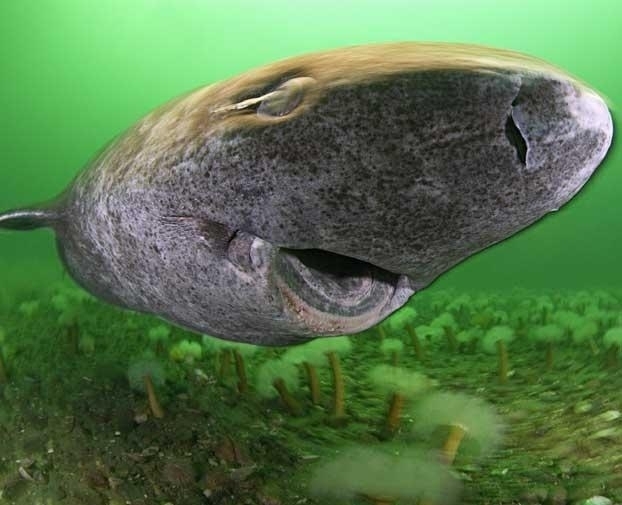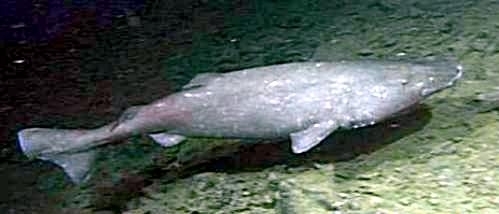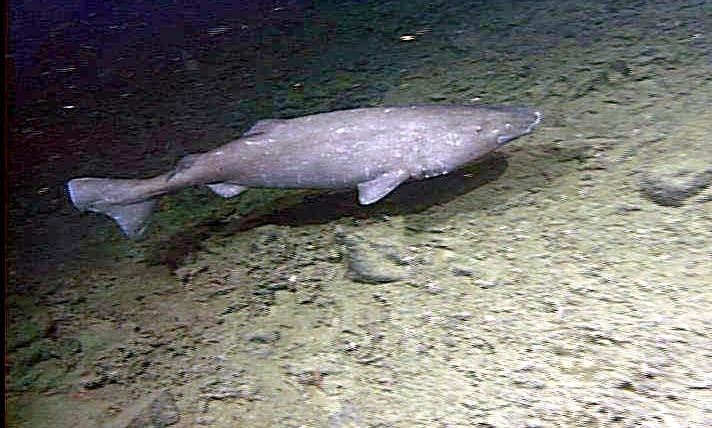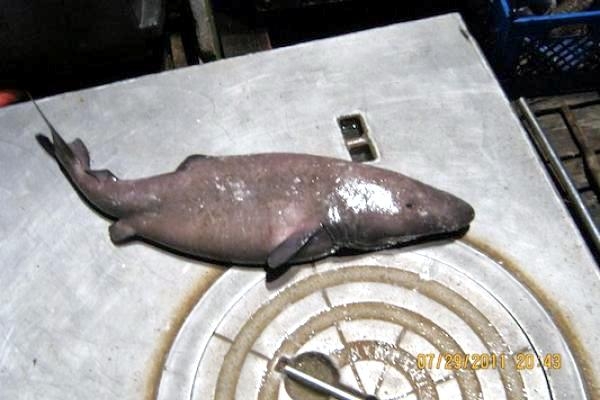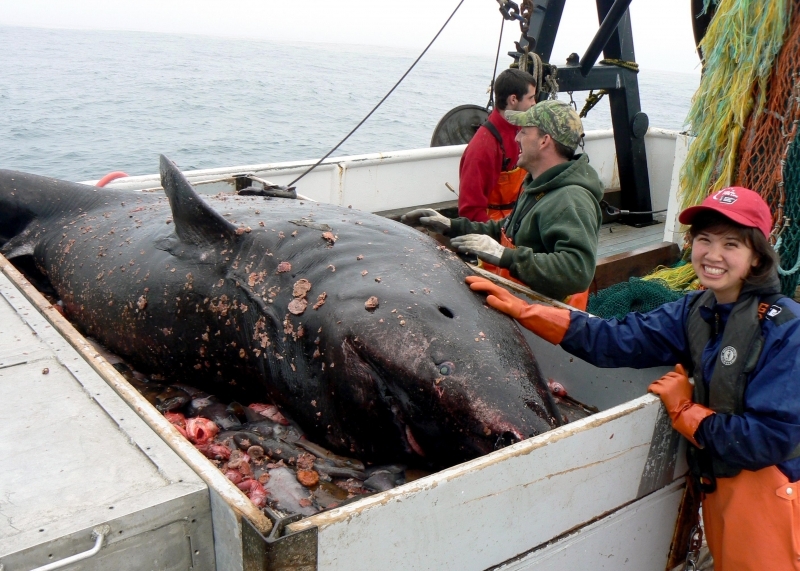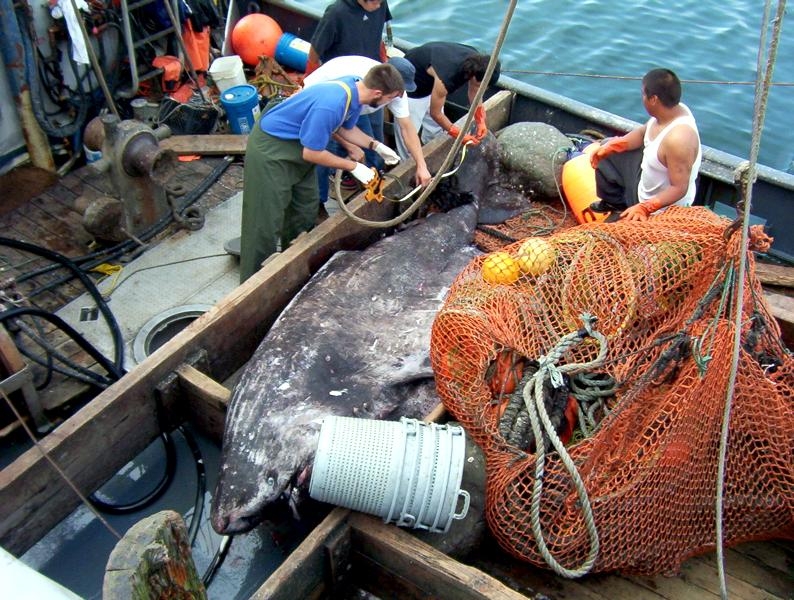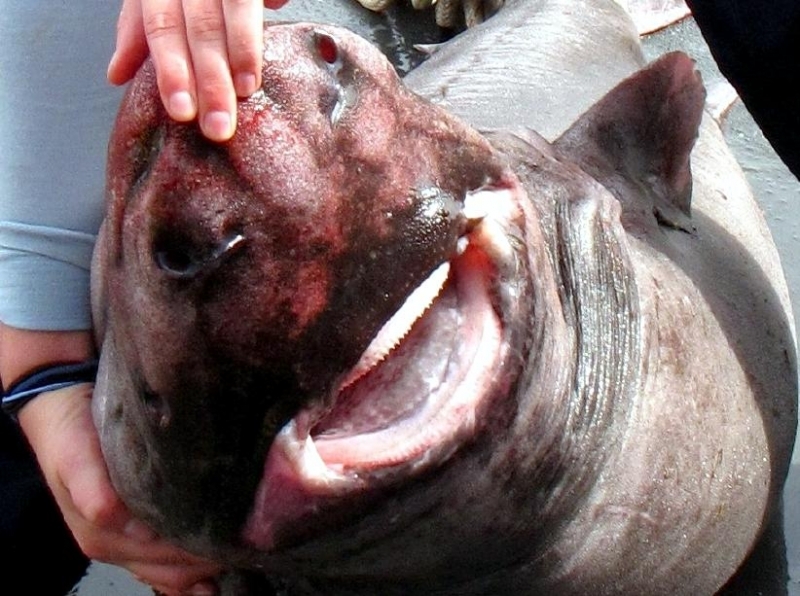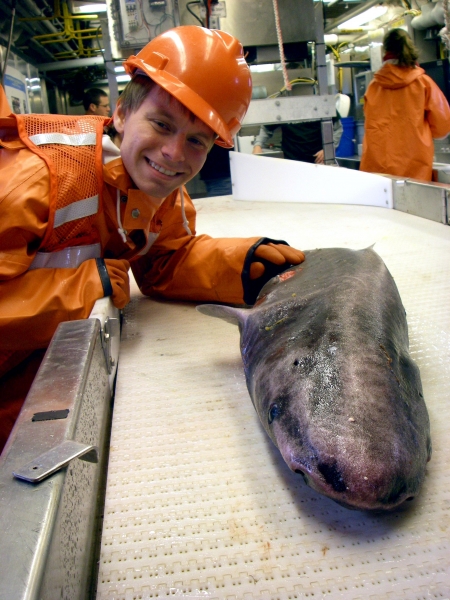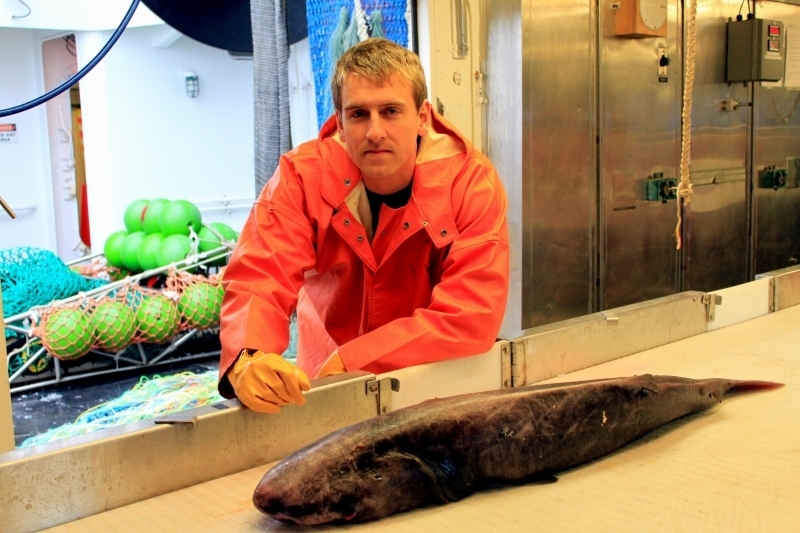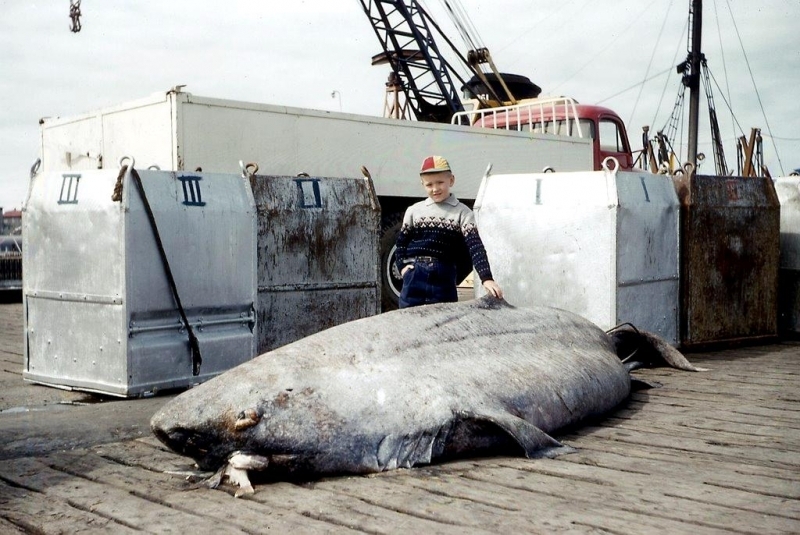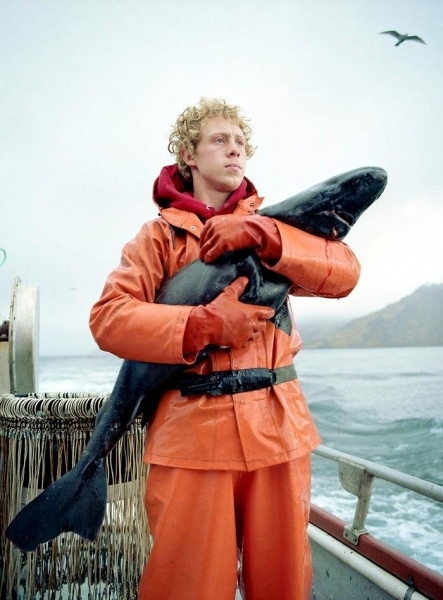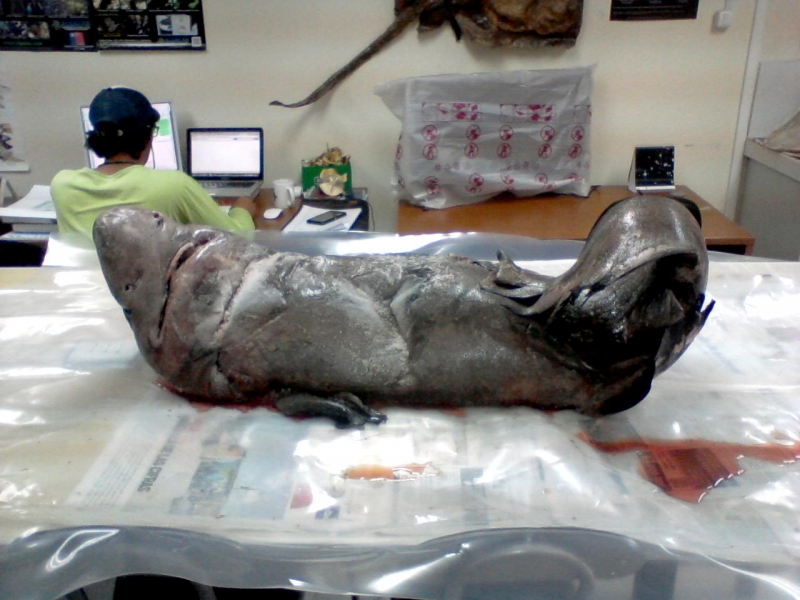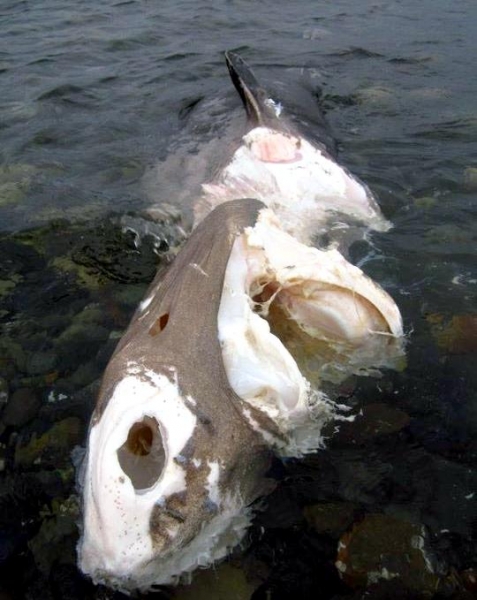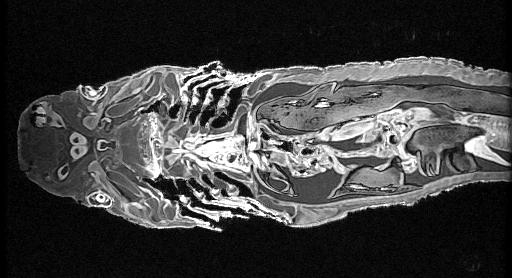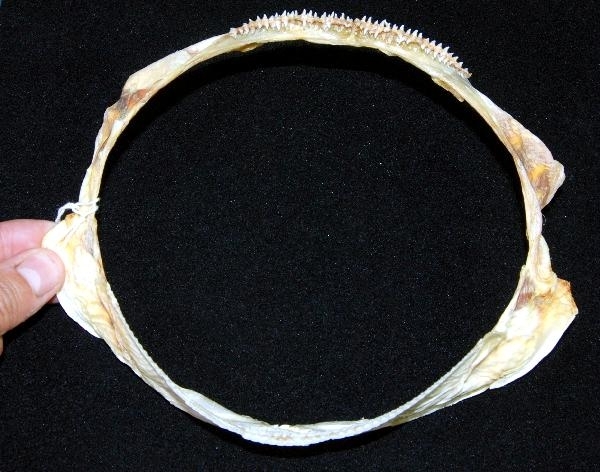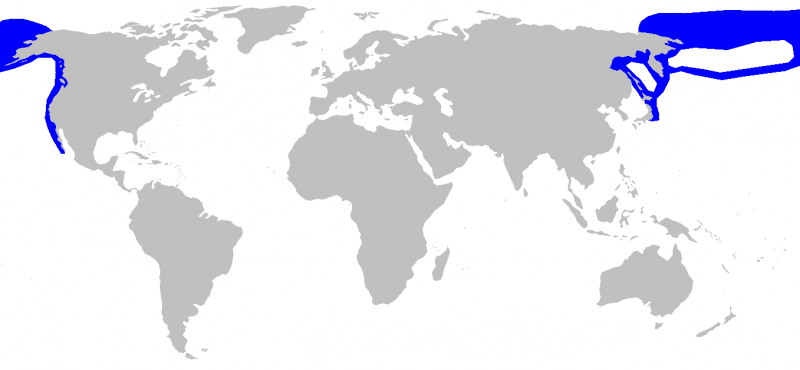“Somniosus pacificus”
Pacific Sleeper Sharks are large deep-water sharks that reach about 4.4 meters in length for males and 4.3 meters for females. It is thought that this species can reach up to 7 meters. The Pacific Sleeper Shark got its name because it’s thought to be rather sluggish and because they’re often found just lying around on the Pacific Ocean floor. The Pacific Sleeper Shark is dark gray to black with blue-black fins with a snout that is short & rounded, the body is cylindrical and the 2 dorsal fins are equal in size. The first dorsal fin is closer to the pelvic fins than the pectoral fins. Small pre-caudal fins are also present and the caudal fin (tail) is asymmetrical with a well-developed ventral (lower) lobe. Pacific Sleeper Sharks can be found in temperate waters between 70°N-47°S in the North Pacific from Japan, along the Siberian coast to the Bering Sea and in southern California, Baja California and Mexico.
In Australian & Asian waters, the Pacific Sleeper Shark is found from the sea-mounts south of Tasmania to the Challenger Plateau off eastern New Zealand and possibly to Macquarie Island. In the southwest Atlantic Ocean, they are found off the coast of Uruguay. This species prefers to inhabit continental shelves & slopes. At higher latitudes, the Pacific Sleeper Shark can be found in littoral (close to the shore) and even inter-tidal areas; in lower latitudes its depth ranges down to at least 2,000 meters. Pacific Sleeper Sharks prey on bottom fishes, octopuses, squids including the Giant Squids and their even bigger relative the Colossal Squid, crabs and occasionally Harbor Seals & Northern Sea Lions as well as carrion. Pacific Sleeper Sharks are thought to be ovoviviparous with pups measuring about 42 centimeters or less. The eggs are retained within the body of the female in a brood chamber where the embryo develops, receiving nourishment from a yolk sac. This is the method of reproduction for the “live-bearing” fishes where pups hatch from egg capsules inside the mother’s uterus and are born soon afterward also known as a “placental viviparous”.
